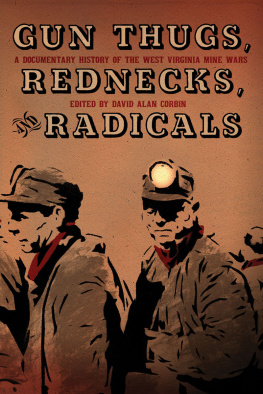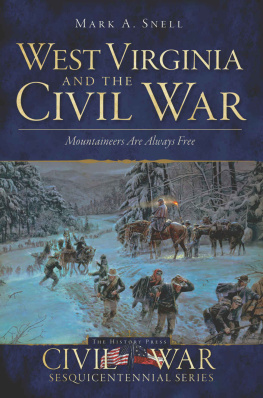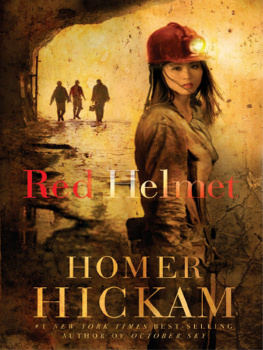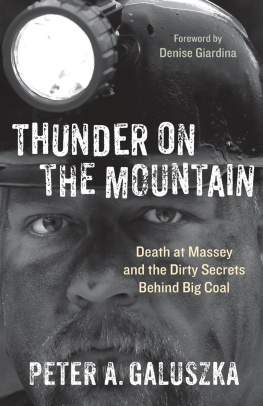
Gun Thugs, Rednecks, and Radicals: A Documentary History of the West Virginia Mine Wars
David Alan Corbin
PM Press 2011
All rights reserved. No part of this book may be transmitted by any means without permission in writing from the publisher.
ISBN: 978-1-60486-452-6
Library of Congress Control Number: 2011927957
Cover design by Josh MacPhee/Justseeds.org, cover and interior illustration by Chris Stain, The Battle of Blair Mountain
Interior design by Lauren Cooper
Transcription by Jacqueline F. Thomas
10 9 8 7 6 5 4 3 2 1
PM Press
PO Box 23912
Oakland, CA 94623
www.pmpress.org
Chapters I-X were originally published in 1990 as The West Virginia Mine Wars: An Anthology by Appalachian Editions, Charleston, W. Va.
Chapter XI was originally published in 1971 as The Socialist and Labor Star: Huntington, W. Va. 1912-1915 by Appalachian Movement Press, Huntington, W. Va.
Map created by Brandon Nida. Credited images courtesy of Goldenseal.
Reprint permission kindly granted by the AFL-CIO, The New York Times Company, The Atlantic, The Nation Company, Inc., the United Mine Workers Journal, and the Baltimore Sun Company.
Printed in the USA on recycled paper, by the Employee Owners of Thomson-Shore in Dexter, Michigan.
www.thomsonshore.com
Contents
A Complete and Ruthless Rule: Emergence of the Company Town
Revolution: The Paint Creek-Cabin Creek Strike
Battle Weaponry: The Bull Moose Special
The Organizers
The Shootout: The Matewan Massacre
The Hit: The Killing of Sid Hatfield and Ed Chambers
Civil War: The March on Logan
Treason
Victory: The UMWA Comes to Southern West Virginia
To my brother Ronald Corbin, for his support and encouragement
Preface
Long banished from history books and popular consciousness, the West Virginia Mine Wars of the early twentieth century continue to be the subject of a belated process of historical recovery. This is, in part, undoubtedly because those distant events reverberate in current-day matters.
The ongoing fight over the fate of Blair Mountain is a case in point. In 1921, Blair Mountain was the site of an armed insurrection by thousands of coal miners against a force of sheriffs deputies and company gun thugs entrenched along the Logan County ridgeline. As the dramatic and culminating action of the Mine Wars, the stakes for both sides were enormous. Either the coal fields of southern West Virginia would remain under the near-absolute hegemony of coal operators or the area would be opened to unionization, making it safe for democracy, to borrow the rhetoric of the late Great War.
There is today yet another battle over the fate of Blair Mountain. This time the stakes are whether or not the mountain will be devastated and leveled by coal industry giants such as Massey Energy and Arch Coal, not only in order to cheaply extract the mineral wealth beneath its surface, but also, by unhappy coincidence, to eradicate the physical terrain upon which workers engaged their class enemies. In 1921, the West Virginia coal miners fought as resolutely as other workers did in those timesin Munich and Turin and Kronstadtand met similar defeat. Such an outcome, however, did not resolve the cause of their struggle, but only prolonged it for a later date.
David Alan Corbin is the author of the most definitive study of that period of open and unrelenting class struggle known as the West Virginia Mine Wars. His book, Life, Work, and Rebellion in the Coal Fields: The Southern West Virginia Miners, 1880-1922, is as thorough and comprehensive a treatment of its subject as can be found between two covers. That is not to say, however, that it is by any means exhaustive, and the texts reprinted here demonstrate Corbins willingness to return to the period and issues of his book, as he has in his articles in journals and other collections.
The texts gathered here provide, in fact, a coda to Corbins continual delving into this much-neglected, but undeniably significant, chapter in the history of American labor. Corbins essay on the Socialist and Labor Star was originally published in 1971 by Appalachian Movement Press of Huntington, West Virginia. Appalachian Movement Press was a cooperative, radical press and very much the product of the student New Left, especially the presence of Students for a Democratic Society (SDS) on the campus of Huntingtons Marshall University. Besides contemporaneous analyses of the class structure of quasi-colonial West Virginia, the press also issued several pamphlets by poet and labor activist Don West, already then known for his regionalist radicalism. Corbins recovery of an important historical moment of West Virginias underground press fit quite nicely with the aspirations of those who brought Appalachian Movement Press into existence.
Corbin would continue to delve into this overlooked but significant era of American class struggle. In 1977, he contributed to a collection titled Essays in Southern Labor History. The article, Frank Keeney Is Our Leader; and We Shall Not Be Moved: Rank-and-File Leadership in the West Virginia Coal Fields, foreshadows themes that would, in the 1981 publication of Life, Work, and Rebellion, reveal the local and self-directed nature of the workers insurrections.
To challenge longstanding mythology that West Virginians were incapable of autonomous resistancea perception seemingly shared by both coal industry apologists and professional agitatorsCorbin published a scathing indictment of the latter in the Journal of American History, titled Betrayal in the West Virginia Coal Fields: Eugene Debs and the Socialist Party of America, 1912-1914. Building on the division of the states Socialists between reformist social democrats, predominant in the northern coal fields, and revolutionary syndicalists, more characteristic of unionists in the southern coal fields, Corbin exposed a vein of regional radical history that would be explored by fellow labor historian Fred Barkey in his account of the history of the Socialist Party in early twentieth-century West Virginia. Even as late as 1993, apologists for Debs would be trying to rescue him from Corbins indictment, most notably Roger Fagges Eugene V. Debs in West Virginia, 1913: A Reappraisal published in West Virginia History.
In 1990, Corbin edited the collection also here republished, then as The West Virginia Mine Wars: An Anthology. The purpose was to gather in a single place contemporaneous accounts of both the 19121913 mine war in Cabin and Paint Creeks and the 1920-1921 events culminating in the Armed March on Blair Mountain. As a compilation of original, long-out-of-print source materials, Gun Thugs, Rednecks, and Radicals exhibits the same archeological and historical intentions evident in the present struggle over the status of Blair Mountain. It was and is grounded in the conviction that to save our own time we must also reclaim and save from annihilation our past, along with that of those thousands of nameless working people who nevertheless wrote their own history by risking everything for liberation.
Gordon Simmons
West Virginia Labor History Association
Introduction
During a dozen years of public schooling in West Virginia, I never heard about the great West Virginia Mine Wars. I never heard of the Paint Creek-Cabin Creek strike of 1912, the Matewan Massacre in 1920, or the 1921 Battle of Blair Mountain. I heard nothing about the leaders of these eventsFrank Keeney, Fred Mooney, and Mother Jones.
Next page








